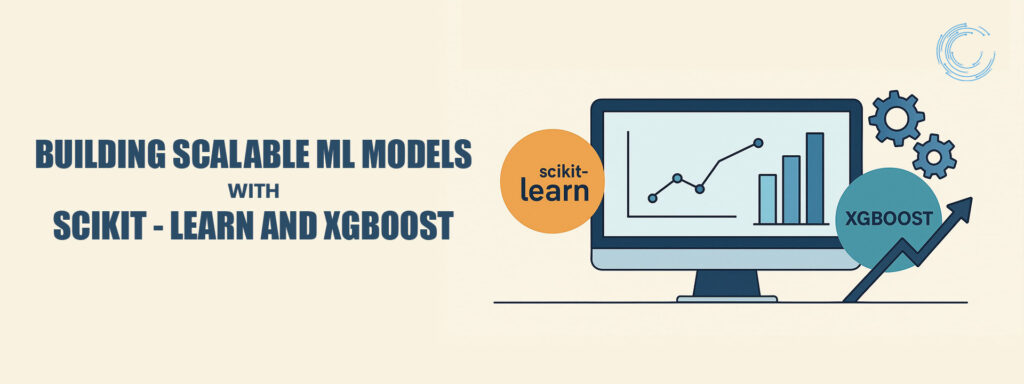
Picture this: you are a small business owner trying to predict which customers will love your new product line. Your data is growing by the day, and you need a model that can keep up—fast, accurate, and ready for the big leagues. That’s where Scikit-learn and XGBoost come in, two powerhouse tools that make building scalable machine learning (ML) models feel like a breeze. Let’s dive into how these tools can help you turn data into decisions, with real-world examples and a human touch. | Scalable ML
Why Scalability Is Your Secret Weapon
In today’s data-driven world, a model that shines on a small dataset can crash and burn when hit with millions of records. Scalable ML models are built to handle massive data, real-time demands, and complex calculations without breaking a sweat. Think of an e-commerce platform predicting holiday shopping trends—scalable models crunch through millions of transactions in seconds, helping businesses stock shelves smarter and boost profits.
Scikit-learn: Your Go-To for Quick Wins
Scikit-learn, a free Python library, is like the Swiss Army knife of machine learning. It’s perfect for beginners and pros alike, letting you whip up models fast and experiment without getting bogged down in code.
Here’s why it’s a fan favourite:
| Feature | Benefit |
| Simple Interface | Test algorithms like regression or clustering with just a few lines of code. |
| Data Prep Made Easy | Clean and transform data with tools for scaling, encoding, and more. |
Real-Life Example: Imagine a coffee shop chain analysing customer preferences. Using Scikit-learn, they tested clustering models to group customers by taste in hours, finding the perfect blend for their new menu.
XGBoost: The Heavy Hitter for Big Data
When your prototype is ready to scale, XGBoost (Extreme Gradient Boosting) steps up. Known for its lightning speed and top-notch accuracy, it’s a favourite in everything from Kaggle competitions to real-world apps. XGBoost builds decision trees that learn from each other, boosting performance while handling huge datasets with ease. Plus, it has built-in tricks to prevent overfitting, so your model stays sharp.
Real-Life Example: A delivery company used XGBoost to predict delays across millions of shipments. Compared to older models, it slashed training time by nearly half and nailed predictions, saving thousands in logistics costs.
Teaming Up for Success
Scikit-learn and XGBoost are like peanut butter and jelly—great alone, unstoppable together. Use Scikit-learn to clean data and test ideas, then plug in XGBoost for high-speed, high-accuracy predictions. With Scikit-learn’s Pipeline, you can tie it all together into a smooth, repeatable process that’s ready for production.
For instance, a fitness app might use Scikit-learn to preprocess user data (like workout habits) and test models, then deploy XGBoost to predict which users might cancel their subscriptions, keeping everything fast and accurate even as sign-ups soar.
Why This Matters in 2025
As data keeps growing, businesses need ML models that can scale without slowing down. Whether you are detecting fraud, personalizing ads, or optimizing supply chains, Scikit-learn and XGBoost offer a winning combo of simplicity and power. They let you start small, dream big, and deliver results that keep you ahead of the curve.
Want to learn more about cutting-edge tech solutions? Explore more insights at TeamITServe.
